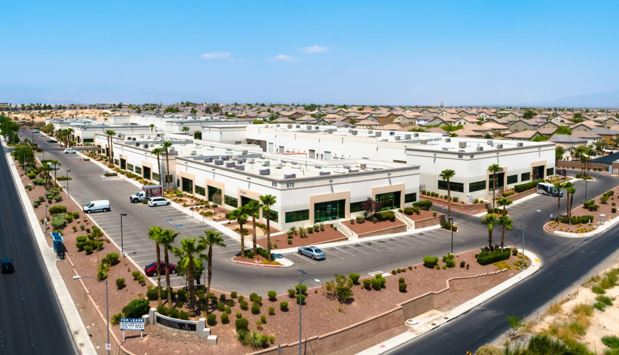Commercial Real Estate (CRE) consists of the following product Types: Industrial, Retail, Office, Land, Multifamily, Hospitality, and Speciality. While all product types have their advantages and disadvantages, industrial real estate in Las Vegas seems to have more pros than cons..
High Barrier to Market: Las Vegas is a unique market as all of the privately owned land in the Valley is essentially landlocked by federally owned land that is managed by the Bureau of Land Management (BLM). In fact, over 80% of Nevada’s land area is owned by the federal government. The vast expanses of desert and mountains one sees while driving or flying into Las Vegas is all but untouchable, with ownership held between the Bureau of Land Management, the Forestry Service, Fish and Wildlife Service, National Park Service, and the Department of Defense. As a result of this, the Las Vegas Valley has a scarcity of industrial zoned land with appropriate infrastructure “reasonably nearby”.
This scarcity, combined with the recent increased demand from major West Coast distributors and institutional buyers is not likely to recede anytime in the near future.
Steady Income: While Office and Retail properties demand and pricing greatly fluctuate (Think Work from Home and the Amazon effect), Industrial in Las Vegas has been able to maintain a steady and increasing average lease rate due to the lack of available supply. With continued population growth and the limited availability, industrial vacancy in Las Vegas is currently at +/- 3% across all industrial building types (2022).
Rent Growth: Lack of available supply for new and growing businesses and the rise in demand for e-commerce and insourcing (the opposite of outsourcing, or the practice of bringing certain parts of a manufacturing process within US borders) is pushing rents to historical highs.
Longer Lease Terms: The typical lease term for a tenant over 50,000 sqft has been 5 years. Now, since vacancy is less than 5% and there is a lack of available opportunities in the market, industrial Tenants are committing to lease terms now exceeding 10 years. This has also trickled down to the smaller users as they historically have leased for 3 years and now they are moving to 5 year terms.
Lower Maintenance: Industrial properties do not require much maintenance since the office area is a fraction of the entire building, and warehouse areas have minimal finishing beyond their exposed structures (also known as the “shell” of the building).
The Bottom Line: It can be argued that industrial real estate is not as glamorous as other product types but, unlike other product types, industrial real estate is essential to the vitality of the economy. With the rise in e-commerce and the realization of insourcing, industrial real estate is positioned to continue to increase in demand and maintain a position of increased value.

